Complete Guide to Wagyu Beef: Is It Worth the Price?
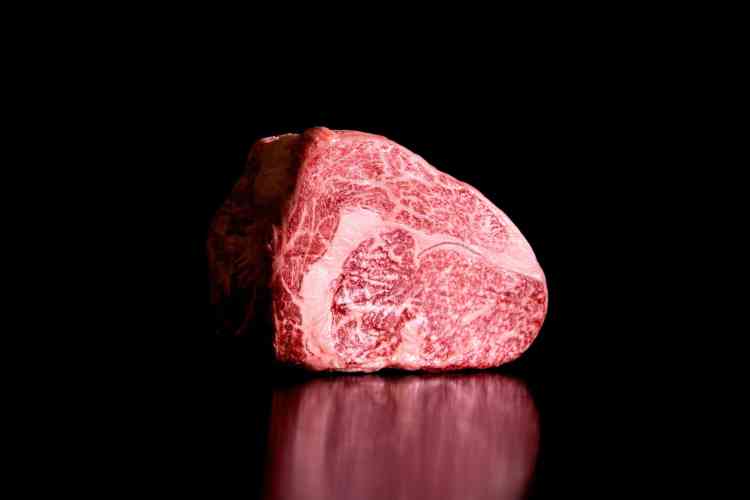
Everyone has heard of wagyu beef, but few of us truly understand what makes it special and why the price tag is so high. How different can it be from a typical steak? Trying to put the seductive taste of wagyu beef into words isn’t easy. Mouthwatering and succulent would be a good start. Rich and buttery would also be accurate. The best word is probably the ultra-trendy umami, which somehow ties all of the previous descriptors together but also speaks to another whole dimension of flavor. No matter how you slice it, wagyu beef is the epitome of luxury meat.
Never tried wagyu beef? You’re not alone. Maybe you’ve seen it on a high-end steakhouse menu but didn’t know whether you’d really be able to taste the difference, so you opted for the old reliable filet mignon or strip. For those who are already acquainted with the melt-in-your-mouth delicacy, we’re sorry, but we are about to share your secret.
Understanding the history behind the wagyu beef mystery, as well as how to identify the real thing, is key to ensuring your money is well spent. These days, you’ll find wagyu beef selections not only on the menus of fancy steakhouses but also in your local sushi restaurant or burger joint. You might even find it showcased at a cooking class in San Francisco.
How do you know if it’s legit? Is there actually a system that regulates what’s real and what’s not, or is wagyu beef used as a marketing gimmick? We’ve got answers to these questions and more so that next time you find yourself facing the decision of whether or not to splurge, you’ll be an expert.
Jump to Section
- What Is Wagyu Beef?
- Why Is Wagyu So Expensive?
- Wagyu vs. Kobe Beef
- Beef Marble Score (BMS) of Wagyu Beef
- Wagyu Beef Rating System
- Japanese Wagyu vs. American Wagyu
- Where to Buy Wagyu Steaks
- Tips for Choosing and Enjoying Wagyu Steaks
What Is Wagyu Beef?
The word itself, wagyu, is Japanese for “cow,” but that doesn't mean that all cows in Japan are wagyu. There are four breeds of cow native to Japan that have the genetic makeup to produce the distinctive marbling that makes wagyu beef so tender and delicious: the Japanese Black, Japanese Brown, Japanese Polled and the Japanese Shorthorn. To be wagyu, a cow must be a purebred specimen of one of these breeds — not crossbred with breeds like Angus, and not raised outside Japan.
What is so special about wagyu? Instead of storing its fat around and outside of the muscle like most animals (and humans) do, this cow can eat a fatty meal and the fat gets integrated and stored within the muscle. The result is a decadent and rich slice of meat with a distinctively smooth texture. Some describe it as having an almost sweet taste compared to traditional beef. The melting point of the fat in wagyu beef is actually lower than the human body temperature, which means it really does literally melt in your mouth.
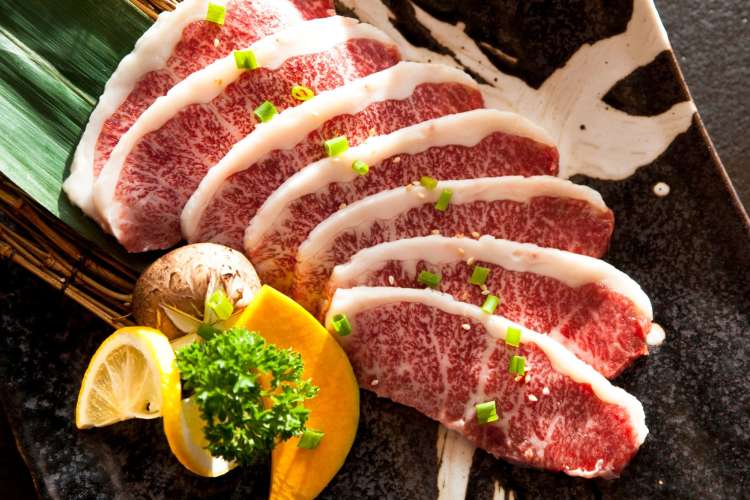
The history of wagyu beef is interesting. Japan was historically not a cow-eating country, but in the late 1800s, there was a shift in willingness to embrace Western culture and the foods associated with it. American and European cattle breeds were imported to Japan and crossbred with native stock. Somewhat by accident, a unique breed emerged that produced a meat much more sophisticated than your average steak. Check out the American Wagyu Association website for an even more detailed history.
Why Is Wagyu So Expensive?
Top-quality wagyu beef can go for upwards of $200 a pound. Why is wagyu beef so expensive? The factors that contribute to the price of wagyu are related mostly to the initial cost of obtaining one for breeding purposes as well as the cost of raising it. Wagyu vs. Angus, for instance, is a much rarer commodity that calls for very specific treatment. A single certified wagyu cow can cost as much as $30,000, which is 10 times more than the typical American Angus. High demand/low supply is a second factor.
The cow that produces wagyu beef lives a life even a human would envy. They are pampered from the day they are born to ensure they live stress-free. Noise levels are controlled, and they have access to a steady supply of fresh water at all times. You may have heard that farmers play classical music for their herds, serve them beer and give them massages. These claims are mostly exaggerated, though it is absolutely true that breeders strive to provide a Zen-like environment.
On some farms, cows are closely monitored and checked as often as every four hours to ensure they’re healthy and happy. Wagyu beef cows are also provided three meals a day of costly ingredients that must be imported from other countries, adding to the overall expense.

There was a time back in the 1970s when wagyu cows could be purchased from Japan and sent to other countries for breeding purposes. No more. Once Japan realized that it had a true national treasure, regulations were put in place to prohibit exporting live animals from the country. Getting purebred wagyu beef outside of Japan requires exporting it after it has been butchered, which just adds even more to the overall cost.
Wagyu vs. Kobe Beef
Another term synonymous with luxury for Japanese beef is Kobe beef. Kobe is actually a specific city in Japan, so when it comes to using the name with beef, it’s essentially just a brand that indicates that this wagyu beef is from Kobe. That said, the question of Kobe vs. wagyu isn't as simple as that. The labeling of Kobe beef is highly regulated. Not only does it have to originate in Kobe, Japan, but it has to come from the Tajima strain of the Japanese Black cattle, and all of the middlemen involved in bringing it to your restaurant must be licensed by the Kobe Beef Association.
Bottom line here is that Kobe beef is a type of wagyu, but not all wagyu beef is Kobe.
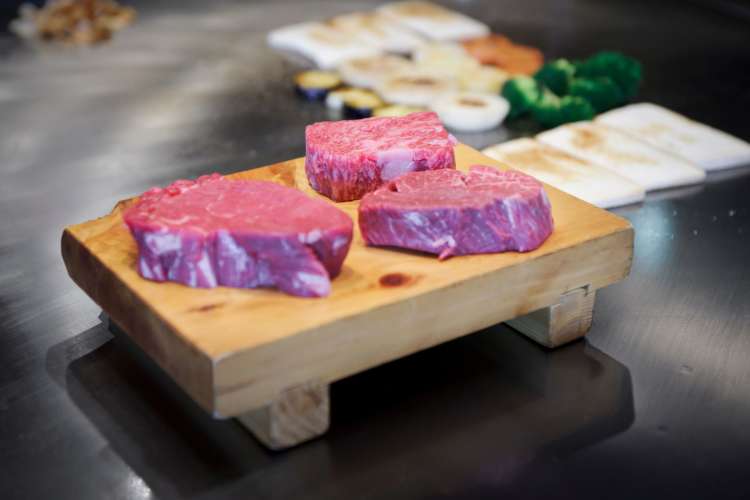
Beef Marble Score (BMS) of Wagyu Beef
Different countries can have their own systems for evaluating meat, but to find some common ground, there is a universal beef grading system called the Beef Marble Score. The varying levels of quality on the BMS range from 1 to 12, with BMS #12 being best. Under the USDA grading system, there are three grades of beef that could make it onto your dinner plate: Select, Choice and Prime. Select beef is BMS #1, with sparse marbling. Choice beef is BMS # 2, with some fairly uniform marbling throughout. Prime beef, the top grade under the USDA, is a BMS #3 to 5+. Prime meat isn't typically found in regular supermarkets; this is the kind of meat you go to a nice steakhouse to enjoy.
To put this all into perspective, Japanese wagyu steaks range from BMS # 8 to 12, putting wagyu beef basically off the charts in USDA terms! (And the Japanese beef rating system doesn't even consider beef with BMS scores of #1 or #2, since there's no nearly no marbling at these levels — a testament to their higher standards for beef in general.)
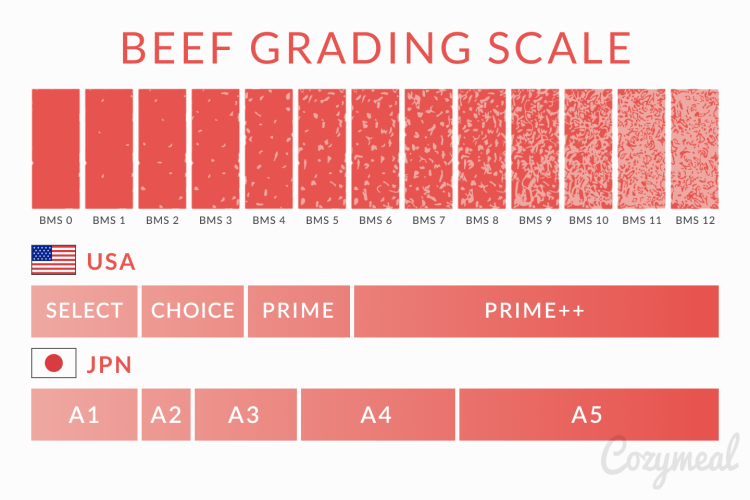
Wagyu Beef Rating System
Let’s get down to the meat and potatoes of this investigation. There’s good news and bad news regarding the wagyu beef rating system. The good news is that there is a rating system, so once you learn what “good” looks like, you’ll be able to make educated choices. The bad news is that the rating systems are a little complicated.
Japan takes its rating system very seriously. Becoming a wagyu beef rater requires years of training, and each animal is rated by three separate people. For true Japanese wagyu, there is a score for the grade of beef which goes from 1 to 5, with 5 being the best.
To complicate matters further, there are letter grades that correspond to the quality of wagyu beef — A, B and C. An A grade is obviously better than B or C. The letters represent how much the actual meat yield from the cow will be. For example, an A-grade cow would be expected to yield at least 72% meat. Japanese A5 wagyu is the absolute top-notch and most expensive cut.

Japanese Wagyu vs. American Wagyu
Recap of what we’ve learned so far: Pure Japanese wagyu can reach far superior ratings to the otherwise highest-tier beef in either the U.S. or Australia, and it's still superior to wagyu crossbred with Angus. But how does it stack up against crossbred or American wagyu?
For the average steak lover, American wagyu will certainly be a more luscious bite than prime beef but won’t come near the luxury of a Japanese purebred. Why is there such a difference?
Before Japan restricted the export of this coveted stock, American breeders could purchase pure Japanese cows and bring them to the U.S. They were then crossbred with Angus cattle to produce what is now known as American wagyu. Japanese breeds are considered pure and have not been crossbred with other breeds.
Because Japan eventually outlawed the exportation of their pure cows, there are now only about 5,000 pureblood wagyu in the United States. The other 35,000 are crossbreeds with no real regulation pertaining to what percentage of the genetic makeup is actually wagyu vs. Angus, so American wagyu may vary greatly in its genetic makeup and thus its overall texture and marbling.
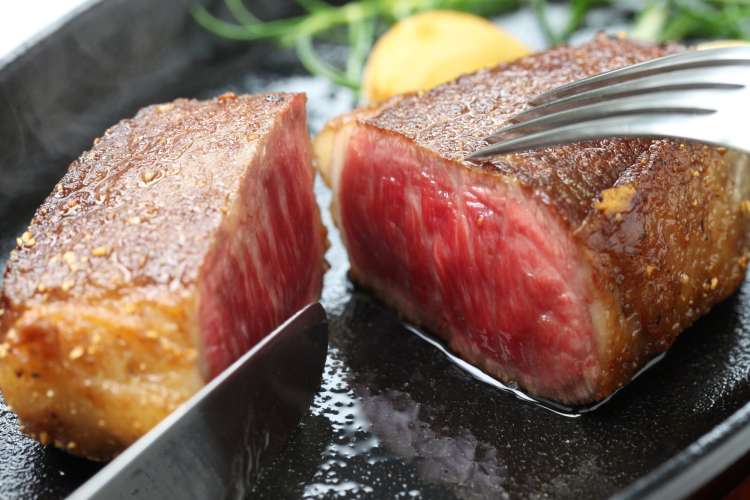
Where to Buy Wagyu Steaks
If you’re thinking about trying to surprise the beef lover in your life with an A5-graded piece of wagyu beef, good luck. Even the most famous chefs in America will tell you it’s almost impossible to get on this side of the Pacific Ocean. The prized A5 wagyu cow is usually sold in its entirety in Japanese markets and then only distributed locally.
That said, just because you can’t get a top of the line wagyu steak in the U.S. doesn’t mean you can’t still get a quality piece to make at home. There was a time when you would only be able to get this delicacy in high-end restaurants unless you actually traveled to Japan. More recently, importers have made progress in being able to work directly with Japanese ranchers to bring the highest quality wagyu beef to America. And as mentioned earlier, there are some American ranchers that raise pure and hybrid cattle here in the states.
If you're searching for top-quality, real, premium Japanese wagyu beef, Holy Grail Steaks is the online retailer for you. With their incredible selection of meats (particularly their wagyu collection), you'll have plenty to choose from for a meal you'll never forget.
Free Shipping on Orders over $199!
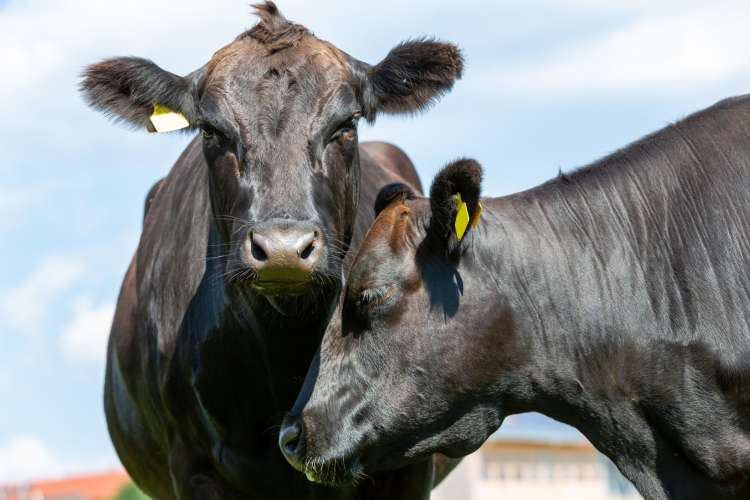
Tips for Choosing and Enjoying Wagyu Steaks
You’ve learned the rating system, so you’ve got the first step down to selecting a good quality piece of wagyu beef. If you’re looking to make wagyu steaks at home as a decadent gift for a meat lover, or maybe you’re looking to prepare for a gourmet online cooking class, there are two things you want to watch out for.
Avoid Anything Labeled American Kobe
First, if you see something labeled American Kobe, you should steer clear. Kobe beef is a very specific brand that must originate in the Kobe region of Japan. Therefore, there is no such thing as American Kobe.
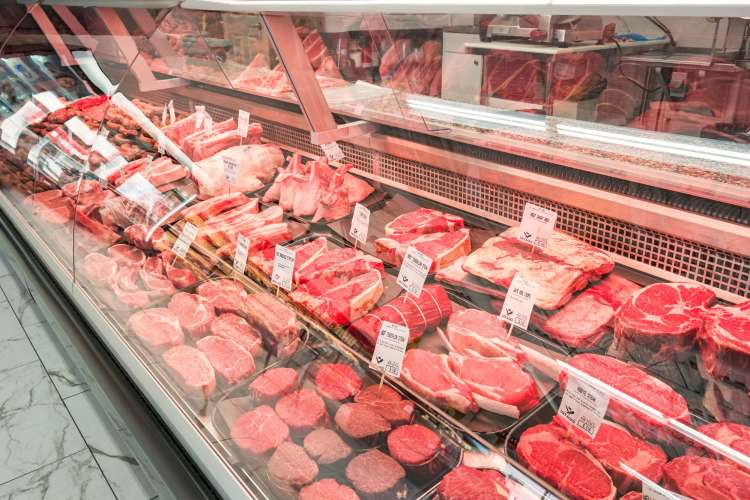
No Cowboy Cuts
Another tip worth having is to know pure Japanese wagyu beef is extremely rich. It’s best served in very thin slices and kept as rare as possible for optimal sweetness and umami flavor. Most people can only eat a few bites before it becomes too rich. That means if you’re planning to prepare at home, don’t break the bank by buying huge cuts of meat. American wagyu is not nearly as rich as Japanese, so you can get a slightly larger cut, but think appetizer-sized and not cowboy cuts.
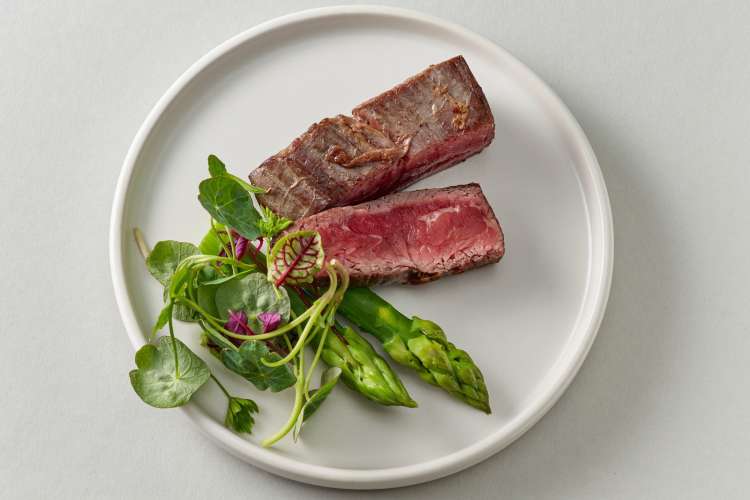
Leave the Cooking to the Experts
Not ready to sharpen your Shinshu knife just yet but still want to know what all the hype is about? Do a taste test. Your best bet is to check out your local steakhouses and speak directly to their chefs before committing your money. Or consider browsing cooking classes in Dallas, a city known for its commitment to beef.
Finding out if the wagyu beef on offer is Japanese or American is the first step. Next is whether or not they’re willing to share the rating with you (and they even know what grade they have). Be skeptical of prices that look too good to be true for restaurants offering wagyu steaks in large portions. If you’re lucky enough to find a place that offers both Japanese and American wagyu steaks, order one of each and compare the differences and taste.
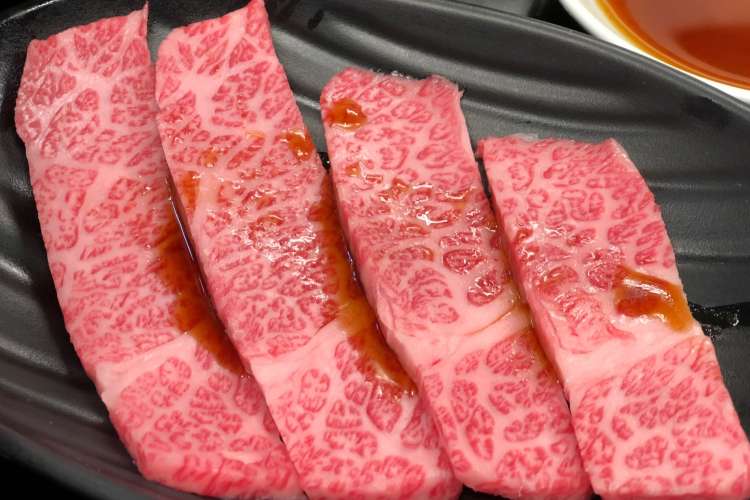
Wagyu beef is truly a luxury item when it comes to prime meat. While the name is recognizable, the lack of information and understanding around it means it doesn’t carry the exclusive reputation of more familiar precious commodities like truffles, caviar or foie gras. Now that you have learned what wagyu is and how to identify a quality cut, the only tools you’re missing are a fork and a knife.
For even more fun ways to explore food, check out other experiences happening on Cozymeal.



FOOD FOR THOUGHT?
Join the conversation.